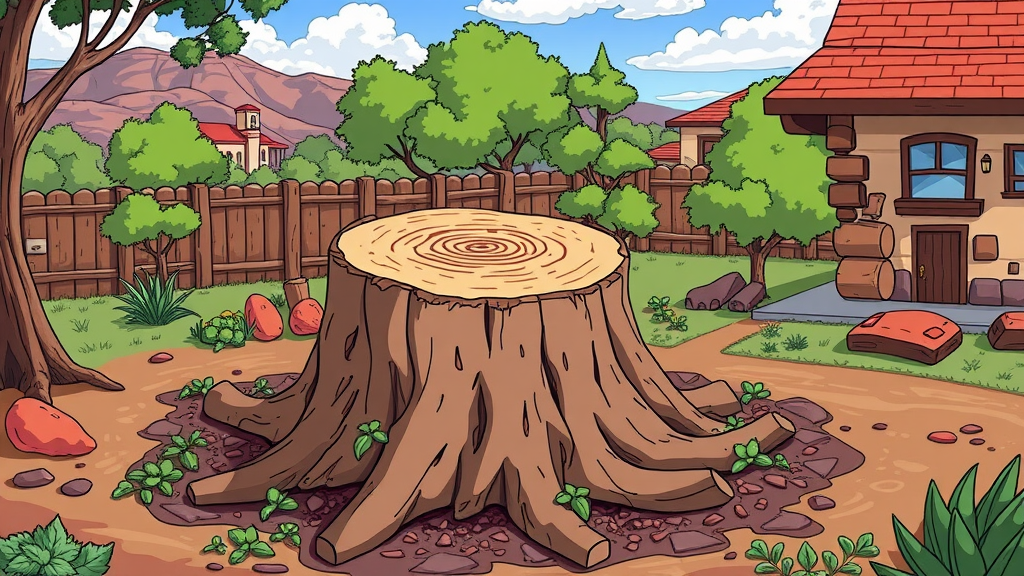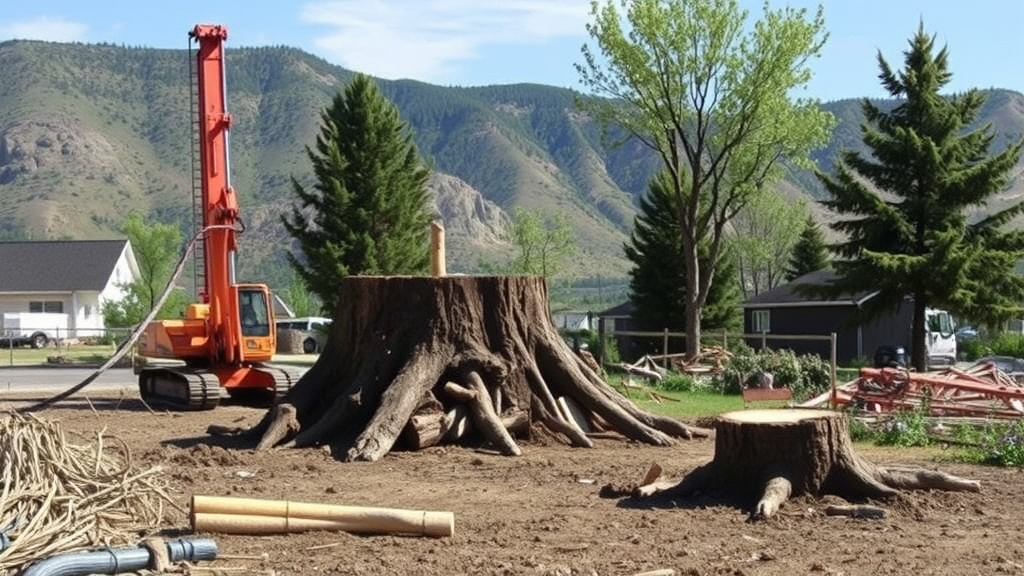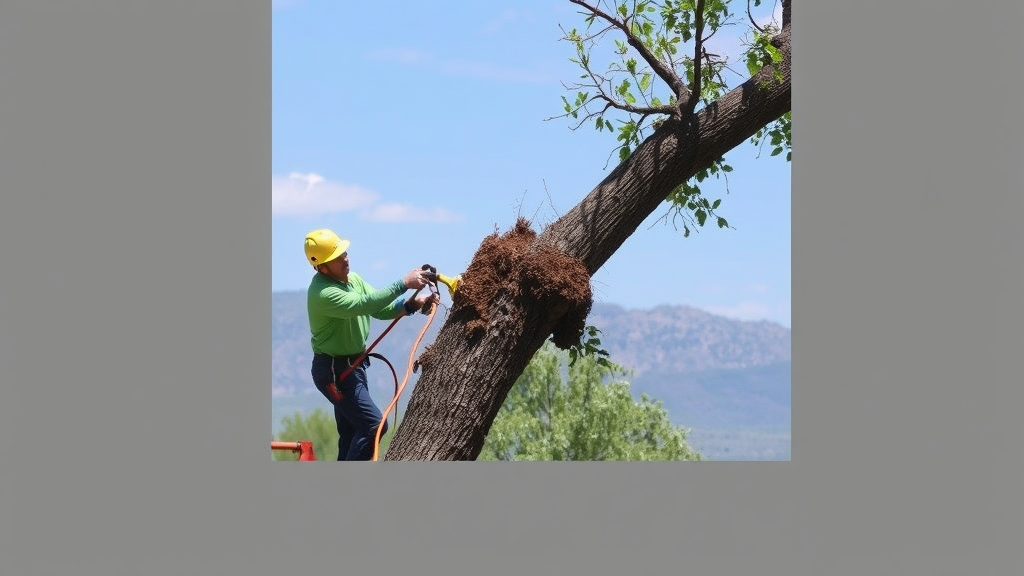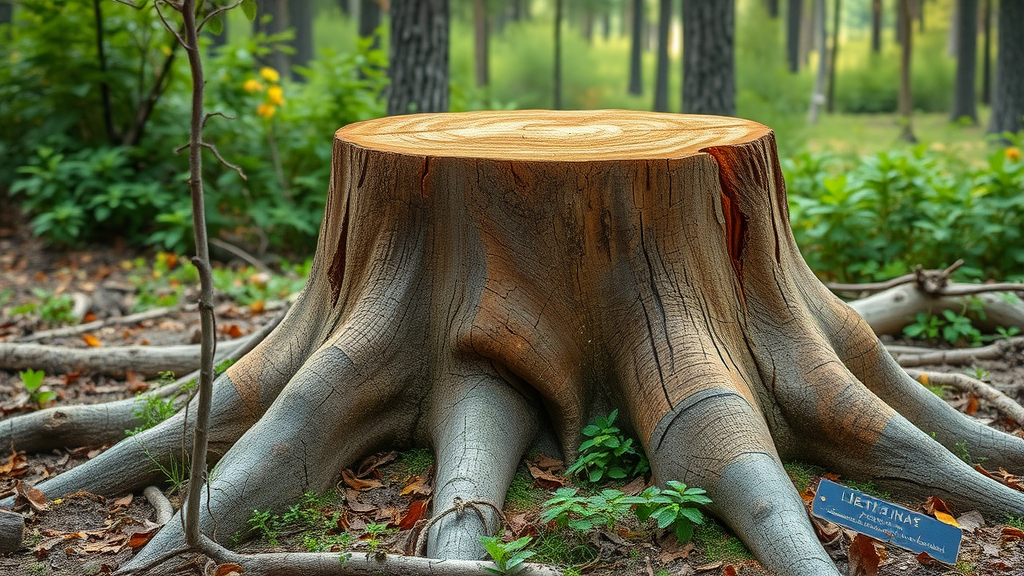The Basic Principles Of Tree Removal In Utah


Name: Truco Services, Inc.
Address: 4640 Commerce Drive, Murray, Utah 84107
Phone: (801) 466–8044
Website: https://www.trucoservices.com/
Facebook: https://www.facebook.com/TruCoServices/
Twitter: https://x.com/truco_services/status/1810260222034038867
Linkedin: https://www.linkedin.com/company/truco-services
Youtube: https://www.youtube.com/@trucoservicesllc5407/videos
PitchBook: https://pitchbook.com/profiles/company/457843-06
Hours of Operation: Monday — Friday: 8am — 5pm; Saturday — Sunday: Closed.
Categories: Landscaping Services, including: Landscape Maintenance; Commercial Landscape Installation; Custom Landscape Design; Irrigation Services; Snow Removal, Tree Services, including: Tree Removal; Pruning; Arbor Care; Tree Trimming; Tree Installation; Emergency Tree Services; Outdoor Kitchen Designing and Installation; Lawn Care and Maintenance; Fertilizer Application (performed by licensed applicators); Holiday Lighting Installation;
Profile: TruCo Services, Inc. is a comprehensive general contracting company based in Murray, Utah, specializing in landscaping and concrete services. Established to cater to both residential and commercial sectors, TruCo Services focuses on delivering high-quality outdoor maintenance and improvement solutions for Landscaping; Concrete; Snow Removal; Tree Removal.
Read more here, here and here.
The Basic Principles of Tree Removal in Utah: Understanding Techniques and Safety Measures
When considering tree removal in Utah, understanding the basic principles is essential for both safety and effectiveness. Trees can pose various dangers, whether they’re dead, diseased, or simply too close to structures. Knowing the right techniques and methods will help ensure the job is done safely and correctly.
Understanding Why Tree Removal is Necessary
Tree removal isn’t just about creating space. In Utah, trees may need to be removed for several key reasons:
- Disease: Trees suffering from conditions like bark beetle infestations may spread disease to neighboring trees.
- Safety Hazards: Trees that are dead or dying can fall and cause damage to property or injury to people.
- Growth Control: In urban areas, removing a tree may be necessary to allow space for new construction or other landscaping projects.
- Root Issues: Tree roots can damage sidewalks, driveways, and foundations if they grow unchecked.
Techniques for Effective Tree Removal
Tree removal requires a strategic approach. Here are some common techniques used by professionals:
Climbing and Cutting
This method involves a professional climber who ascends the tree to cut branches and sections from above. This technique minimizes damage to surrounding plants and structures. Proper equipment includes chainsaws, ropes, and safety gear.
Felling
This method is often used for larger trees. The tree is cut down in a controlled manner, ideally in a direction that avoids any obstacles. It’s essential to have an escape route cleared in case the tree falls unexpectedly. Professionals typically use a series of cuts, including a notch cut and a back cut.
Sectional Dismantling
For trees located in cramped spaces or near structures, sectional dismantling is often the safest choice. The tree is removed branch by branch, starting from the top. This technique allows for a high level of control over where each section lands, reducing the risk of damage.
Crucial Safety Measures
Safety should always be the priority when it comes to tree removal. Both professional arborists and homeowners should consider the following precautions:
- Wear Safety Gear: Hard hats, goggles, and gloves are essential when operating cutting tools.
- Assess the Area: Before starting, survey the area for hazards like power lines, nearby structures, and unstable ground.
- Have an Escape Plan: Always plan your exit route before beginning the removal. Be prepared for unexpected movements of the tree.
- Use Proper Equipment: Ensure that chainsaws and other tools are regularly maintained and sharp. Using the right tools makes the job easier and safer.
Permitting and Regulations in Utah
In Utah, it’s crucial to be aware of local regulations regarding tree removal. Some cities may require permits, especially for trees on public land or those considered historical. It’s essential to check with local authorities to avoid fines or legal issues.
Hiring Professionals vs. DIY Methods
While some homeowners may opt for a DIY approach, hiring professionals is often the safest choice. Experienced arborists have the tools, knowledge, and expertise to handle tree removal effectively. Here are some reasons to consider professionals:
- Expertise: They understand the dynamics of tree stability and can assess which removal technique is best.
- Insurance: Professional arborists typically carry insurance, protecting you from liability in case of accidents.
- Disposal: Professionals can manage the disposal of the tree and clean up the area afterward.
Ultimately, whether you choose to tackle tree removal yourself or hire a professional, understanding the basic principles and adhering to safety guidelines is essential. Equip yourself with the knowledge and tools necessary to make informed decisions about tree management in your Utah landscape.
Common Reasons for Tree Removal in Urban Environments
Trees offer numerous benefits in urban environments, but there are situations where removal becomes necessary. Understanding the common reasons for tree removal can help homeowners and city planners make informed decisions. Here are several key reasons why trees may need to be removed in urban settings:
Safety Concerns
One of the primary reasons for tree removal in a city is safety. Trees that are dead, dying, or structurally compromised can pose significant hazards. If a tree has a decayed trunk or large, dead branches, it may fall unexpectedly, causing damage to property or injuries to pedestrians. Regular inspections can help identify trees that require attention before they become safety issues.
Health of the Tree
Sometimes, trees become infested with pests or diseases that can impair their health. When a tree’s condition declines to the point where restoration is not feasible, removal may be the best option. It is crucial to identify these conditions early and consult with an arborist to determine whether a tree can be salvaged or needs to be taken down.
Overcrowding
In densely populated areas, trees can become overcrowded. When several trees are competing for the same light, water, and nutrients, some may not thrive. Removing certain trees can help balance the ecosystem, allowing the remaining ones to prosper. This practice not only supports the health of urban forests but also enhances the aesthetic appeal of the area.
Damage to Infrastructure
Trees with expansive root systems can cause significant damage to sidewalks, roads, and underground utilities. This can lead to costly repairs and pose safety hazards for pedestrians and drivers. If a tree’s roots are causing structural issues, the city may decide that it’s best to remove that tree to protect infrastructure and ensure public safety.
Site Development
Urban development projects often necessitate tree removal. Whether it’s for building new homes, commercial spaces, or roads, clearing trees is sometimes an integral part of the construction process. While this can lead to the loss of individual trees, cities and developers often engage in reforestation efforts to compensate for loss and promote environmental health.
Aesthetic Reasons
Sometimes, the appearance of a tree may contribute to the decision for its removal. If a tree is misshapen, has unsightly growths, or is not in harmony with the surrounding landscape, homeowners or city planners may opt to remove it. Beautification projects often include the removal of undesirable trees, followed by planting more suitable species for the environment.
Environmental or Wildlife Concerns
In certain situations, trees need to be removed to protect native wildlife or the environment. For instance, invasive tree species may overshadow and outcompete native flora. Removing these trees can help restore local ecosystems and promote biodiversity. Moreover, if a tree becomes a nesting site for aggressive or harmful wildlife, removal may become necessary for human safety.
Occupational Hazards
Sometimes, specific urban locations may have recurring occupational hazards that warrant tree removal. For example, trees near power lines can cause outages if branches interfere with electrical cables. In such cases, tree removal is vital to maintain service reliability and protect public safety.
Regular Maintenance
Routine tree maintenance is essential in urban areas. If a tree is consistently causing problems despite regular pruning and care, it may be time to remove it. Trees requiring excessive maintenance may be better off replaced with more suitable and less maintenance-intensive species that can thrive in city environments.
Final Thoughts
Understanding the reasons for tree removal in urban environments helps ensure that decisions are made with the community’s best interests at heart. While the loss of a tree can be unfortunate, sometimes it paves the way for more sustainable greenspaces and safer urban living conditions. If you face a situation that requires tree removal, consider consulting with professionals who can provide expert advice and guidance tailored to your specific circumstances.
Legal Considerations for Tree Cutting in Utah
When it comes to tree cutting in Utah, understanding the legal considerations is essential. Whether you’re a homeowner looking to trim your trees for aesthetics or safety or a contractor hired for a larger job, being aware of local laws can prevent legal complications. Here are some crucial factors to keep in mind.
Know Local Ordinances
Before you start any tree cutting project, familiarize yourself with local ordinances specific to your city or county in Utah. Zoning laws can have specific regulations regarding tree cutting, especially if the trees are part of a designated conservation area or within proximity to private property. Not adhering to these regulations can result in fines and order for replanting.
Tree Ownership and Property Lines
One of the most important legal aspects of tree removal involves understanding tree ownership and property lines. Here’s how to navigate this:
- Property Lines: Trees that are on the border between two properties can complicate ownership. If the trunk of the tree stands on your property, you generally have the right to cut it down. However, if it stands entirely on your neighbor’s property, seek their permission first.
- Shared Trees: If the tree is on the boundary line and both neighbors claim ownership, both parties typically need to agree before removal. Try to come to an amicable understanding to avoid disputes.
Protected Trees
In Utah, certain trees may be protected under local ordinances. Some municipalities have specific regulations regarding the removal of trees that are rare, historical, or part of a neighborhood’s unique landscape. If you suspect your tree might fall into this category, check with your local forestry department or city planning office.
Permit Requirements
Many areas in Utah require permits for tree cutting, especially for large trees or when cutting is being performed in scenic or protected zones. Here’s what you need to keep in mind:
- Check for Permits: Before beginning your project, check if your city requires a permit for removing a tree. Failure to secure a permit when necessary can lead to fines or mandated replanting.
- Application Process: If a permit is needed, you may have to complete an application and possibly consult with an inspector or city official. Be prepared to provide information on the tree species, size, and why removal is required.
Tree Cutting and Environmental Impact
Understanding the environmental implications of cutting down trees is also crucial. Some areas may be sensitive ecosystems, and cutting down trees can affect local wildlife and the environment. If applicable, you may be required to undergo an environmental assessment before proceeding, especially if the tree is part of a larger ecosystem.
Insurance and Liability
If you’re hiring professionals for tree removal, ensure that they have adequate insurance. Liability insurance protects you from potential damages incurred during the cutting process. Here are a few important points:
- Hire Insured Professionals: Always request proof of insurance from tree service companies. This protects you from potential liability if an accident occurs.
- Worker’s Compensation: Ensure that the contractors have worker’s compensation coverage to protect you from liabilities related to injuries sustained by workers on your property.
Disputes and Neighbor Relations
Disputes can arise over tree cutting, especially if neighbors feel their property or views are affected. To ensure a smooth process, keep the following in mind:
- Communicate: Before cutting down any tree, discuss your plans with your neighbors. This can help reduce misunderstandings and foster better relationships.
- Document Everything: Keep records of any agreements or permits obtained related to the tree cutting to avoid future disputes.
While tree removal might seem straightforward, the legal landscape in Utah is nuanced. Being informed about local laws, gaining proper permits, and approaching neighbors diplomatically will make the process smoother and hassle-free. Always consider consulting a lawyer if you’re unsure about any legal concerns related to tree cutting in your area.
Environmental Impact of Tree Removal and How to Mitigate It
Tree removal is often necessary for various reasons, such as safety, property development, or disease management. However, understanding the environmental impact of this practice is crucial. Trees play a vital role in our ecosystem by providing oxygen, improving air quality, conserving water, and supporting wildlife. Their removal can lead to several consequences. Let’s explore these impacts and ways to mitigate them effectively.
Understanding the Environmental Effects
When trees are removed, the immediate effect is a reduction in the number of trees available to absorb carbon dioxide, a leading greenhouse gas. Trees act as natural air filters, capturing pollutants and releasing oxygen. Thus, greater tree removal can lead to poorer air quality and higher overall carbon emissions.
Additionally, trees help in conserving water. Their roots absorb and hold moisture in the soil, reducing runoff and preventing soil erosion. Removing them can lead to increased surface runoff, contributing to water pollution and loss of valuable topsoil. This water loss can affect local water supplies and create challenges for nearby ecosystems.
Wildlife is also significantly affected by tree removal. Many species rely on trees for habitat, food, and shelter. The removal of trees can lead to population declines or even extinction for some of these species. It disrupts the delicate balance of local ecosystems, leading to unforeseen consequences down the road.
Mitigation Strategies
To minimize the environmental impact of tree removal, incorporatingsome essential strategies is necessary:
- Conduct Environmental Assessments: Before any tree removal, conduct a thorough assessment of the area. This evaluation should identify the potential impacts and outline measures to mitigate them.
- Limit Tree Removal: Whenever possible, avoid the removal of mature trees. Consider alternatives like pruning or maintaining the tree. Tree trimming can often solve problems without needing full removal.
- Replace Removed Trees: For every tree you remove, consider planting two or three in its place. This not only replaces the lost benefits but can also enhance biodiversity.
- Choose Native Species: When replacing trees, opt for native species. Native trees are better adapted to the local environment and require fewer resources than non-native varieties.
- Control Erosion: After removing trees, implement erosion control measures. Planting cover crops and installing silt fences can help retain soil during heavy rainfall.
- Educate the Community: Raising awareness about the importance of trees can foster a culture of responsible tree management. Encourage community involvement in local conservation efforts and tree-planting events.
Understanding Local Regulations
Before proceeding with tree removal, it’s essential to familiarize yourself with local regulations in your area. Many regions have specific laws regarding tree removal, especially concerning protected species or public lands. Some municipalities may require permits before removing trees, ensuring that you are abiding by the local guidelines.
Tree Removal Alternatives
If tree removal seems necessary, consider alternatives that could help preserve the tree:
- Tree Pruning: Regularly pruning can eliminate dead or overlapping branches without removing the entire tree and promote better growth.
- Transplanting: In some cases, moving a tree to a different location may be possible, allowing for continued growth without sacrificing its ecological benefits.
- Health Assessments: Depending on the health of the tree, treatment for diseases or infestations may be a viable alternative to removal.
By understanding the environmental impact of tree removal and employing strategies to mitigate these effects, individuals and communities can protect their local ecosystems. When trees are taken down, decision-makers should always weigh the pros and cons carefully. With responsible stewardship, we can ensure that our environment remains vibrant and sustainable for future generations.
Choosing the Right Professionals for Safe Tree Removal in Your Area
When it comes to tree removal, choosing the right professionals is essential for safety and efficiency. In areas like Utah, where diverse landscapes and varying weather conditions exist, it becomes even more critical to ensure you’re hiring qualified individuals. The following guidelines will help you find the right team for your tree removal needs.
Look for Credentials
Not all tree removal services are created equal. Here are some key credentials to consider:
- Insurance: Always verify that the company carries liability insurance. This protects you from any damages that may occur during the job.
- Certifications: Look for arborists who are certified by recognized organizations, such as the International Society of Arboriculture (ISA). This indicates they have undergone training and have the necessary knowledge.
- Experience: Inquire about their experience specifically in tree removal. A team with several years in business will likely handle unexpected challenges more effectively.
Read Reviews and References
Finding a reputable service can often be achieved through feedback from past customers. Here’s how to go about it:
- Online Reviews: Websites like Yelp, Google, and Angie’s List provide ratings and reviews that can give you insights into the company’s performance.
- Ask for References: Don’t hesitate to ask the company for references from past clients. A reliable service should have satisfied customers willing to speak about their experiences.
- Social Media: Platforms like Facebook often have user comments that can give you an idea of the company’s reputation within the community.
Get Multiple Estimates
Obtaining multiple estimates allows you to compare pricing and services offered.
- Transparency: A trustworthy service will provide a clear estimate that outlines the cost, including any extra fees. If an estimate seems suspiciously low, it could be a red flag.
- Assessments: During the estimate process, the professionals should evaluate the tree’s condition and surrounding factors, such as power lines and structures. This is an indication of their thoroughness.
- Inclusions: Ensure you know what services are included in the price, such as cleanup and stump grinding. This can affect the value you receive for the cost.
Prioritize Safety Standards
Tree removal can be hazardous work. Thus, it’s crucial to confirm that the team you hire follows safety standards. Here’s what to check:
- Personal Protective Equipment (PPE): Ensure that the workers wear safety gear like helmets, gloves, and eye protection.
- Safety Protocols: A reputable company will have safety measures in place, including proper equipment and training for their team.
- Site Safety: They should also evaluate the site to minimize risks to you and your property, including checking the drop zone and ensuring no obstacles could interfere.
Ask About Equipment
The type of equipment used in tree removal can greatly influence the job’s safety and efficiency. Consider the following factors:
- Modern Equipment: Ask if the company uses up-to-date, reliable tools and machinery. This can reflect their level of commitment to safety and efficiency.
- Specialized Tools: Certain tree removals may require specific equipment or methods. Make sure the team is equipped for your particular situation.
- Maintenance: Reliable companies regularly maintain their equipment, reducing the risk of breakdowns during the job.
Final Steps in Your Selection
Once you have narrowed down your choices, take a final look at their contracts and paperwork:
- Written Agreements: Ensure all estimates, services, and terms are documented in writing. This protects you in case any issues arise.
- Payment Terms: Be clear about payment schedules. Avoid paying in full until the work is completed to your satisfaction.
- Company Policies: Understand their cancellation and rescheduling policies in case of unexpected weather conditions.
By following these guidelines, you’ll be more equipped to choose the right professionals for safe tree removal in your area. Remember, the right team can ensure that your tree removal process is safe, efficient, and hassle-free, allowing you to focus on enjoying your landscape.
Key Takeaway:
When considering tree removal in Utah, understanding the basic principles is essential to ensure safety, legality, and environmental responsibility. Here are the key takeaways based on the fundamental topics covered:
First, becoming familiar with the techniques and safety measures involved in tree removal is crucial. Proper techniques such as the use of ropes and pulleys, alongside protective gear, keep you and others safe during the process. It’s important to recognize that tree removal is not an easy task and requires knowledge of tree anatomy and the tools involved. This is especially true in urban environments where overhead power lines and close proximity to buildings pose additional risks.
In urban areas, tree removal is often necessary for several common reasons. Trees may be diseased, damaged, or posing hazards to structures and pedestrians. Moreover, property owners may need to remove trees that obstruct sunlight or view or those that interfere with construction plans. Understanding these reasons helps you make informed decisions about whether a tree should be removed.
Legal considerations also play a vital role in tree removal in Utah. Certain regulations might govern the cutting down of trees, particularly in protected zones. Before engaging in any tree removal project, individuals must familiarize themselves with local laws that enforce tree preservation to avoid fines or legal issues.
The environmental impact of tree removal cannot be overlooked. Trees play vital roles in reducing carbon footprints and promoting biodiversity. When contemplating tree removal, consider mitigating strategies like planting new trees or choosing less invasive alternatives when possible. This helps maintain ecological balance even after removing a tree.
Choosing the right professionals for tree removal is perhaps the most critical step. Trained arborists possess the expertise needed for safe and efficient tree removal while adhering to local laws and ensuring the minimal environmental impact. Hiring a certified and insured professional safeguards not just your property, but also public safety during the removal process. By considering these key points, individuals can navigate the tree removal landscape in Utah effectively and responsibly.
Conclusion
Understanding the basic principles of tree removal in Utah is essential for any homeowner considering this significant task. By familiarizing yourself with the fundamental techniques and safety measures, you can make informed decisions that ensure a successful outcome. Whether trees need to be removed due to disease, safety concerns, or landscape enhancement, knowing the common reasons for tree removal in urban environments will help you recognize when action is necessary.
It’s important to be aware of the legal considerations surrounding tree cutting in Utah. Knowing local regulations and obtaining the necessary permits can save you from legal complications down the line. Environmental impact should also be a top priority; understanding how tree removal affects local ecosystems can help you adopt practices that mitigate harm, such as replanting efforts or selecting alternative landscaping solutions.
Choosing the right professionals for safe tree removal is vital. Experts not only bring the skills needed for a safe operation, but they also understand the nuances of local regulations and environmental stewardship. Engaging trained arborists or tree removal companies ensures that the job is completed efficiently while safeguarding your property and the surrounding environment.
By taking the time to understand these aspects of tree removal, you empower yourself to make ethical and responsible choices. Proper planning, legal compliance, and professional assistance can transform the tree removal process into a positive experience that supports both your immediate needs and the long-term health of Utah’s natural landscape.
If you need a tree service in Utah, you can call:
Truco Services, Inc.
4640 Commerce Drive
Murray, Utah 84107
(801) 466-8044
https://truetreeservices.com/










